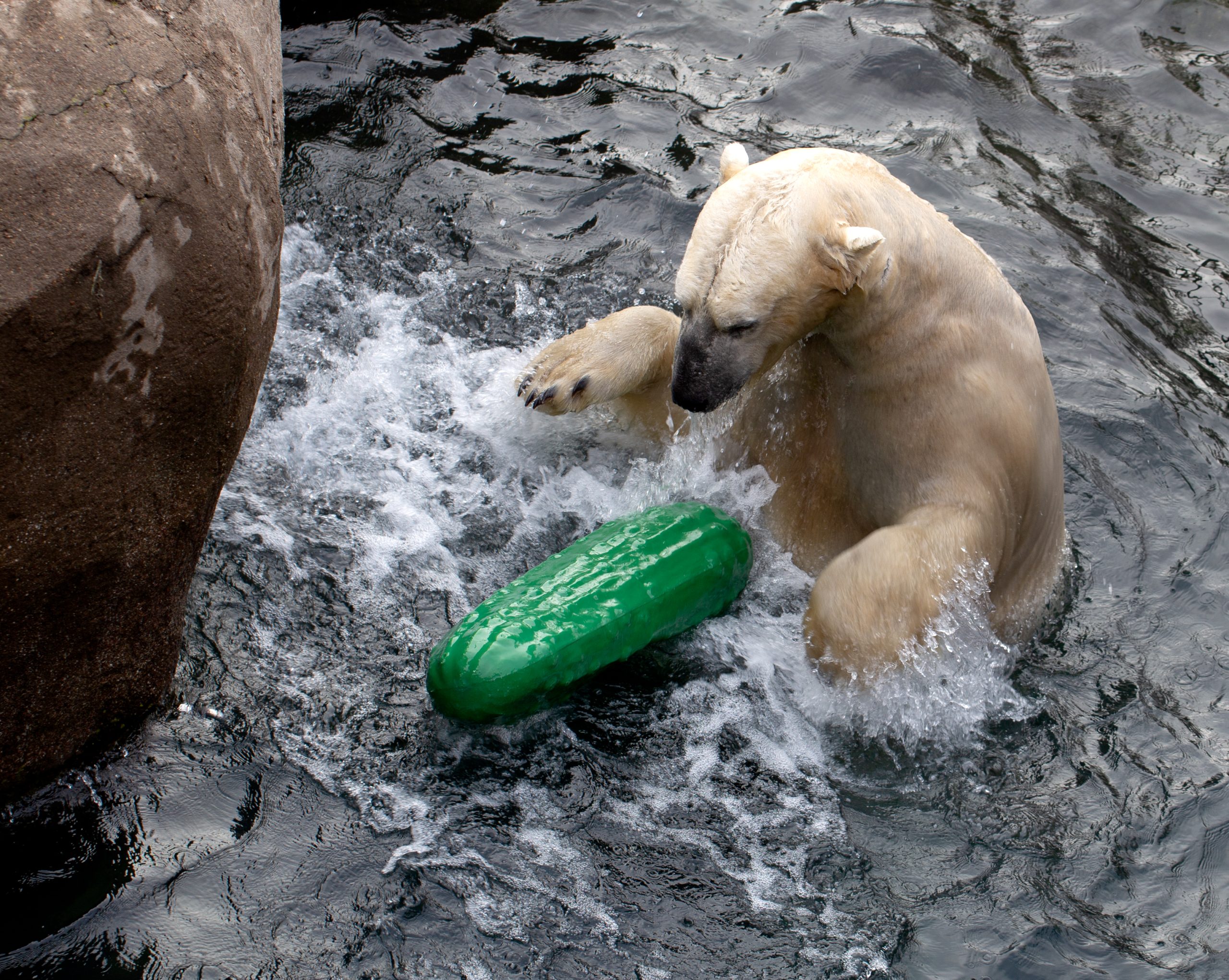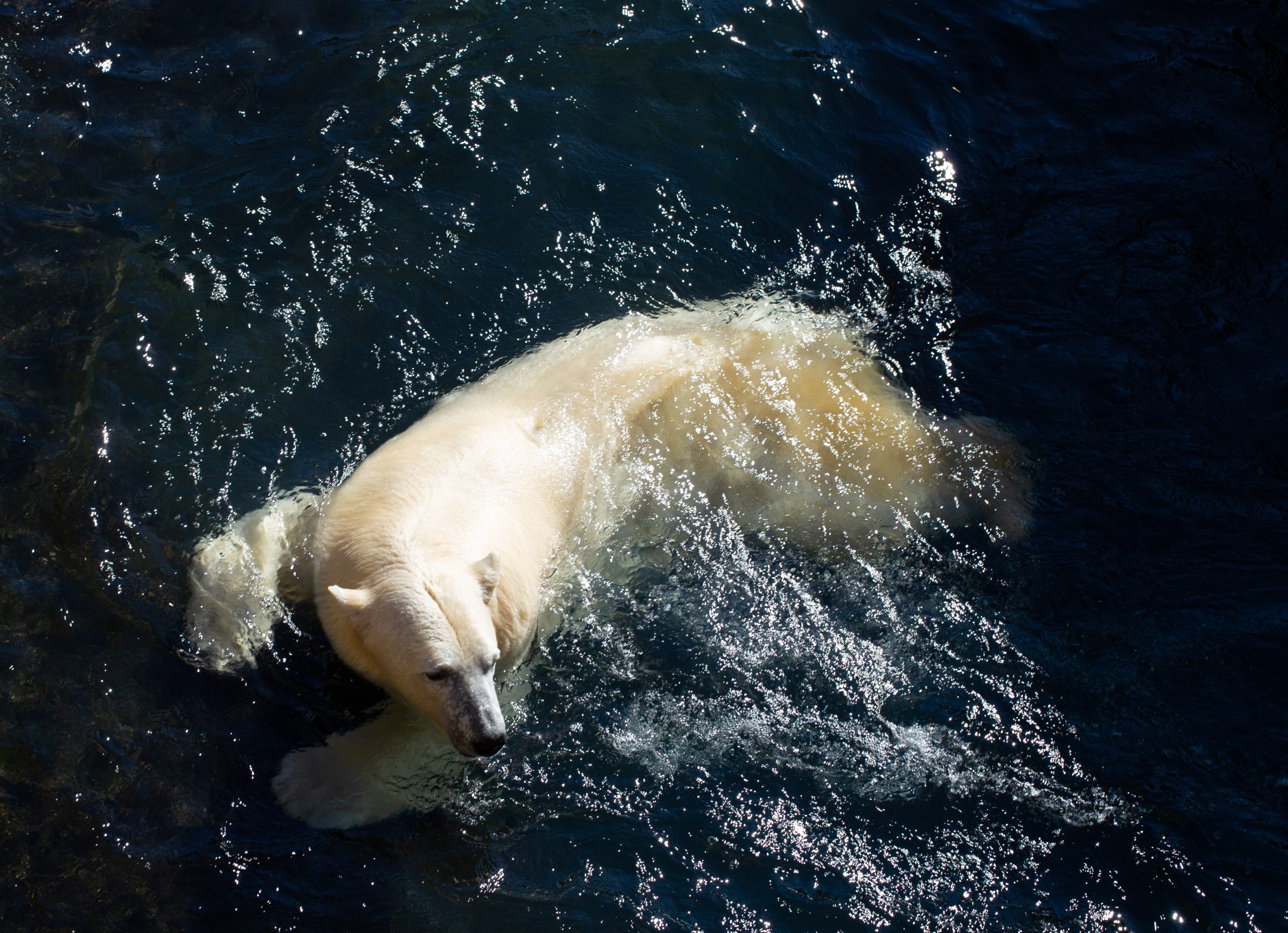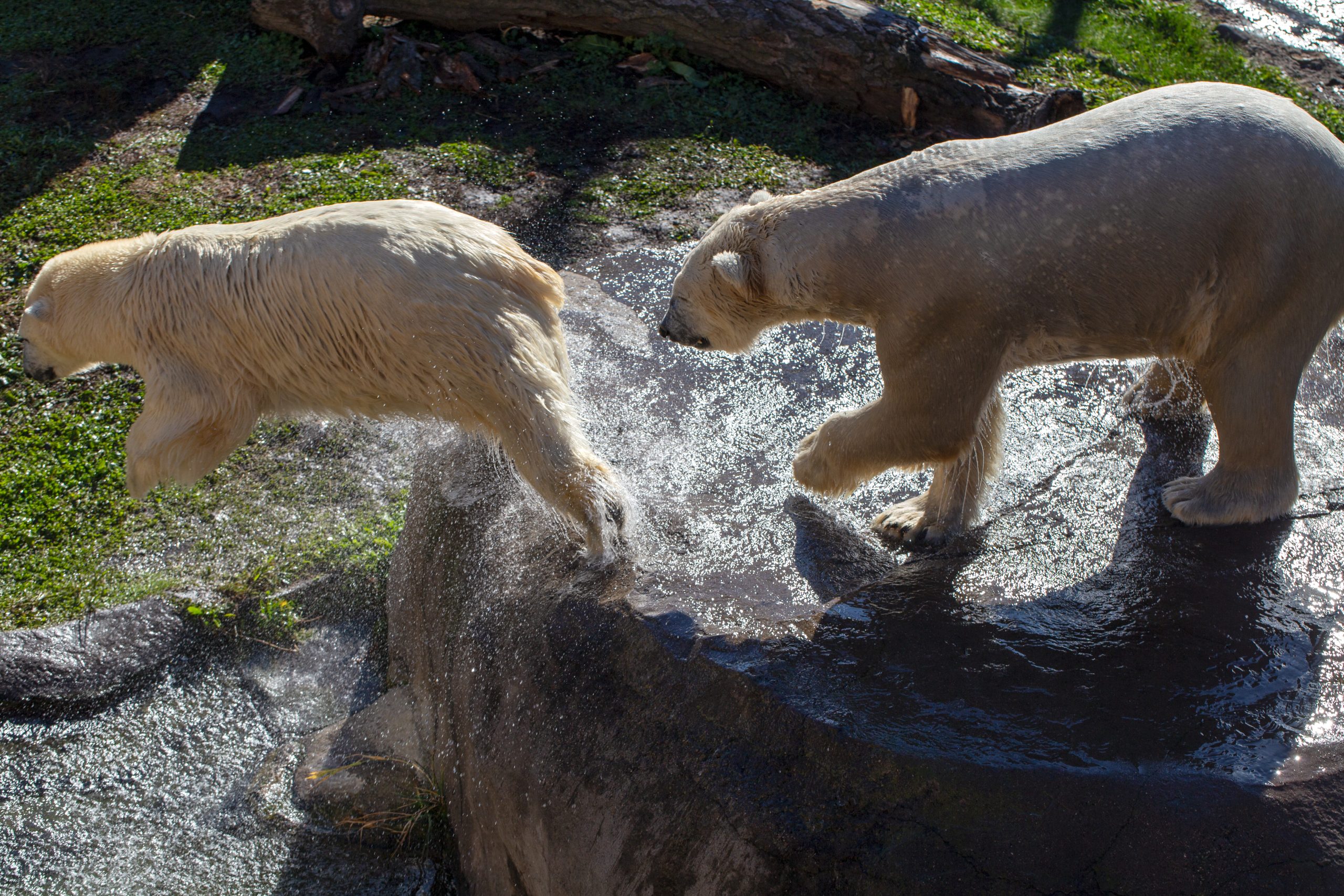Astra the polar bear’s recent arrival at Como Zoo is part of an international effort to increase breeding success for this vulnerable species
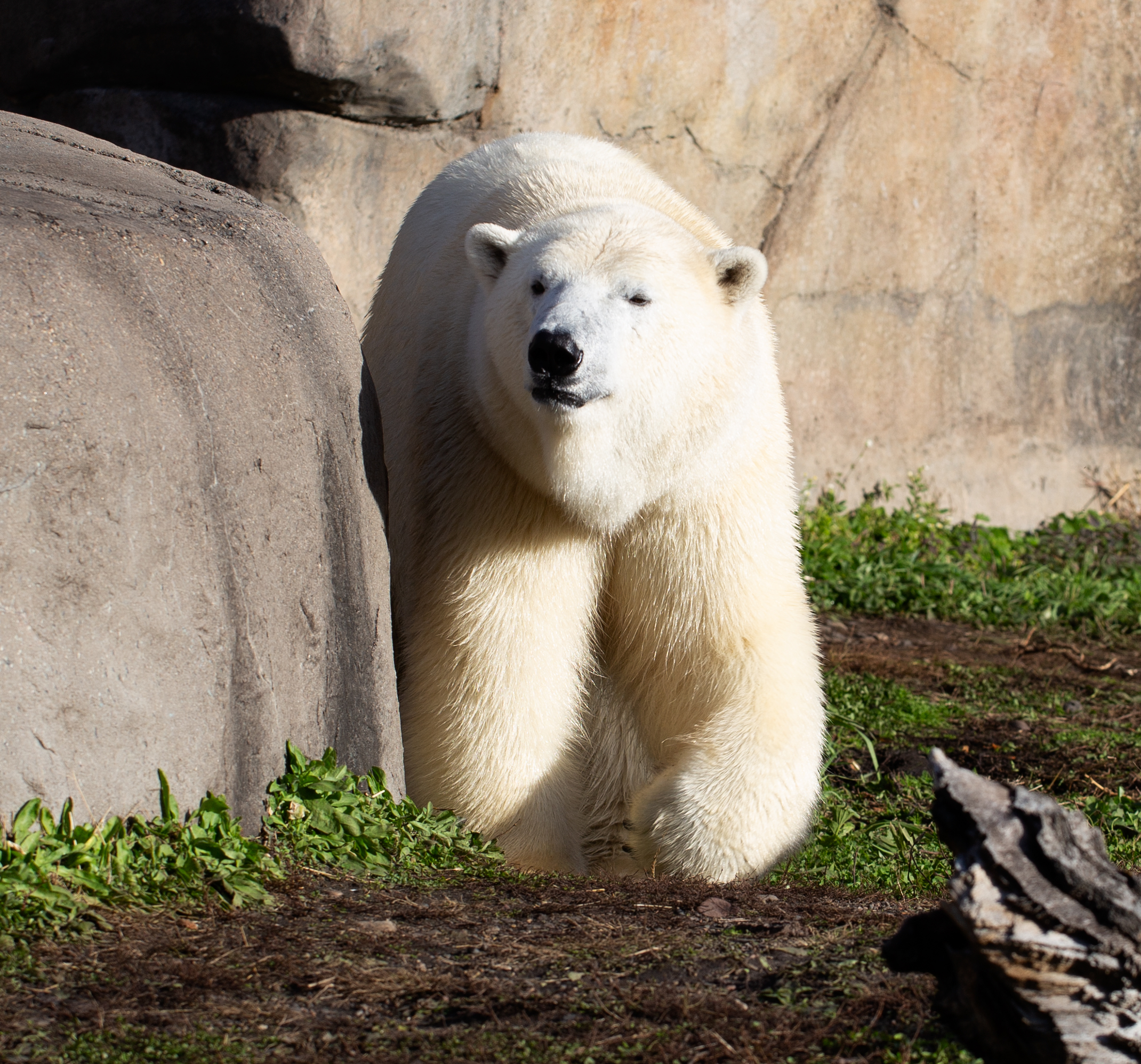
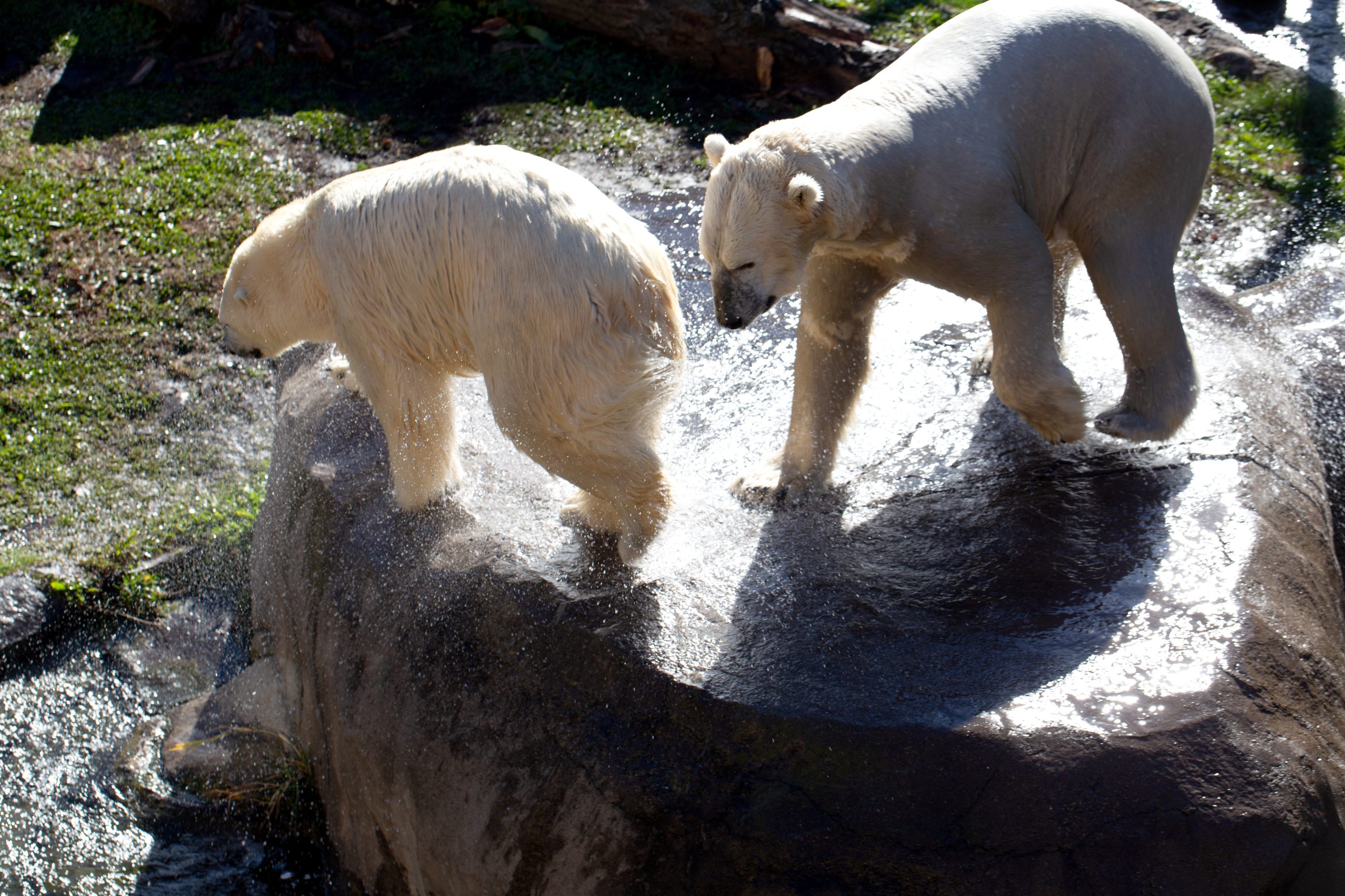
When new animals arrive at Como Zoo, they typically meet their assigned roommates through a process zookeepers call a “Howdy”—a chance to see, hear, and smell the resident animals on the other side of a steel mesh barrier. The initial step before a full-on introduction, these first impressions can give keepers important clues about how animals on both sides of the mesh might be feeling about the meeting.
But when Como Zoo’s two youngest polar bears, Astra and Kulu, had their first howdy this fall, their behavior made it clear they were eager to get even closer. “They seemed to be really wanting to play together,” says aquatics keeper Kelley Dinsmore, part of a behind-the-scenes team that’s been watching the bears’ every move since four-year-old Astra’s (She just turned five on November 17) arrival in October from Tacoma’s Port Defiance Zoo. “They’d be laying at the howdy doors near each other, and trying to pass toys through the mesh, so we had a very good feeling that we could just go ahead and introduce these two, since they seemed to want to be near each other.”
During their first encounter outdoors at Polar Bear Odyssey in early November, Kulu chased Astra around the habitat, eventually following her in a belly flop right into the deep pool. “There was never any aggression,” says keeper Becky Sievers. “They just played, and if he stopped chasing her, she would turn to see if he was still coming. They put on a really good show for everyone.”
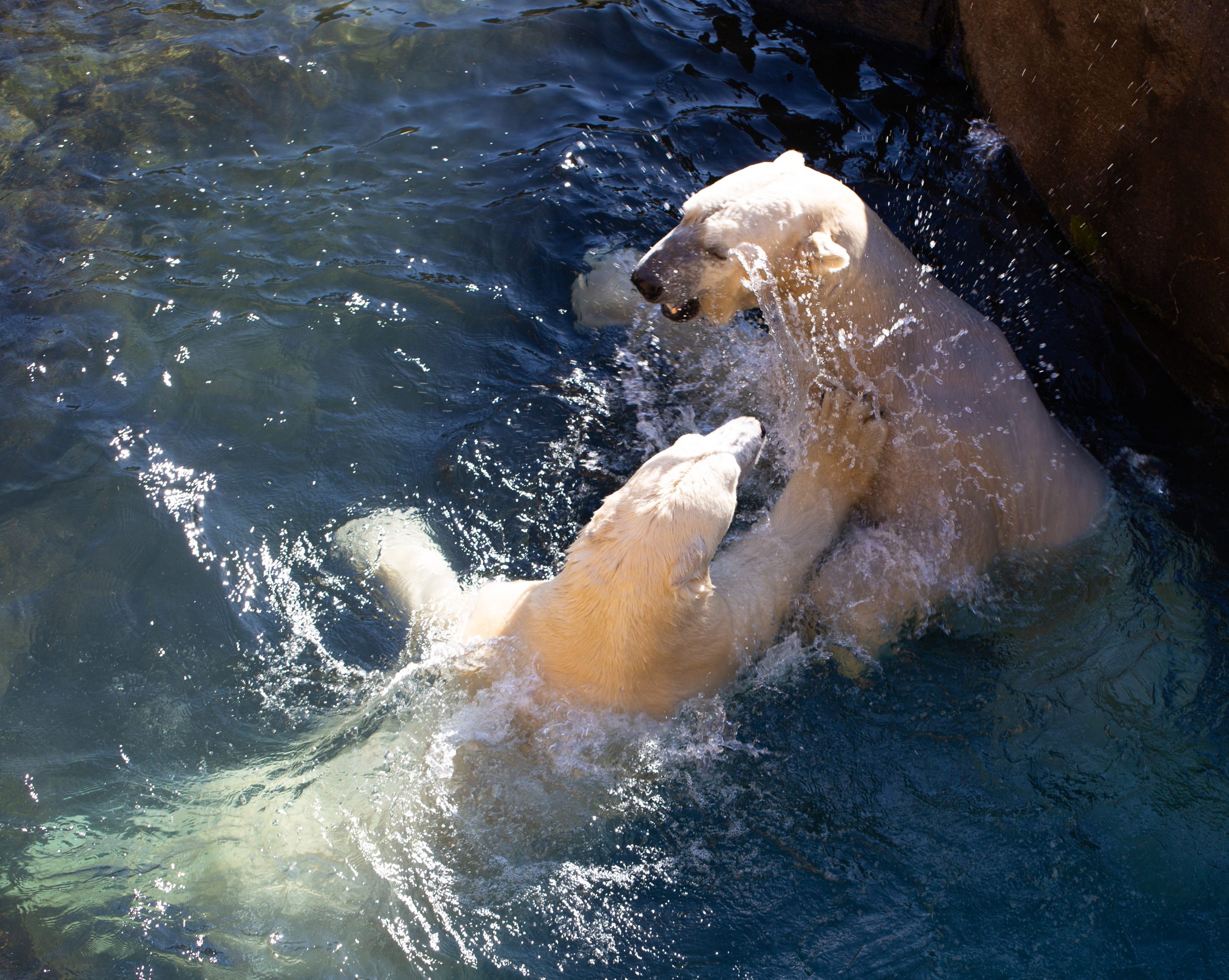
The splashing and frolicking play visitors can now see most days in Polar Bear Odyssey all bodes well for the future success of this new breeding pair, the first such union in Como Zoo’s history.
“Will love be in the air? We are really hoping so,” says senior keeper Allison Jungheim.
She speaks not only for the Como Zoo aquatics keepers who’ve been anticipating this match for months, but also for an international network of conservation experts exploring new ways to boost the population of polar bears. For the last decade, births among the 37 polar bears now in U.S. zoos have been lagging, with about 1.5 cubs born each season. It’s not enough to sustain the aging population, where 16 are now over the age of 20—including Como’s Neil, 29, and Nan, 30, two of the oldest polar bears in North America.


It’s a population that Jungheim knows well in her role as program leader and studbook keeper for North America’s polar bears, where she tracks the genetic health and history of 56 individuals living in partner zoos across Canada and the U.S. A project of the Bear Taxon Advisory Group through the Association of Zoos and Aquariums, the studbook is one of the ways that zoos work together to ensure that managed populations of polar bears are living their best lives. Another is the new Polar Bear Population Alliance (PBPA), a collaborative network launched last November, that’s been making new breeding recommendations across the country, including the new match between Astra and Kulu.
“The Polar Bear Population Alliance is working to make sure that polar bears are going to be here in the future by increasing the number of polar bear cubs born annually to achieve a sustainable population,” says Jungheim, who is both a founding member of the PBPA and serves on the PBPA’s Polar Bear Management Group (PBMG). One of the group’s first priorities is to move reproductive-age females like Astra into optimal breeding spaces like Polar Bear Odyssey. The next is to create additional pairings with other females, preferably with one male for every two females.
“The hope is that having two females will create competition, and get these bears going reproductively forward when breeding season comes around late winter,” she says. “Polar bears that have been housed together during the summer have proven to be more successful, while bears that have a history of contraception—a common practice when the polar bear population was larger—have been less successful.”
While data points like that are helping to determine where the zoo population’s reproductive bears should move in the months ahead, there’s no guarantee that every pairing will be successful. Not only do polar bears reproduce through delayed implantation, new cubs also have a 50 percent mortality rate during their first year. Even so, Como’s keepers are encouraged by the positive and playful behavior they’re observing from Astra and Kulu, though breeding behavior may take some time.
“It may take these two young, innocent bears a little bit of time to get it right, but that’s something we’ve seen with many other animals at Como,” Jungheim says. “Nature always finds a way.”

Your support for Como Friends helps support conservation projects at home and around the world through Conservation Champions, a competitive microgrant program for Como’s professional zookeepers, horticulturists, education specialists, and interpretive staff. Give to the Max for Como Park Zoo and Conservatory, and your gift will go twice as far! Thanks to generous matching gifts from Como Friends’ Board of Directors and longtime supporters Sandy and Dean, every gift you make to Minnesota’s most visited cultural destination will be doubled, dollar for dollar, up to $52,500. Thank you!



